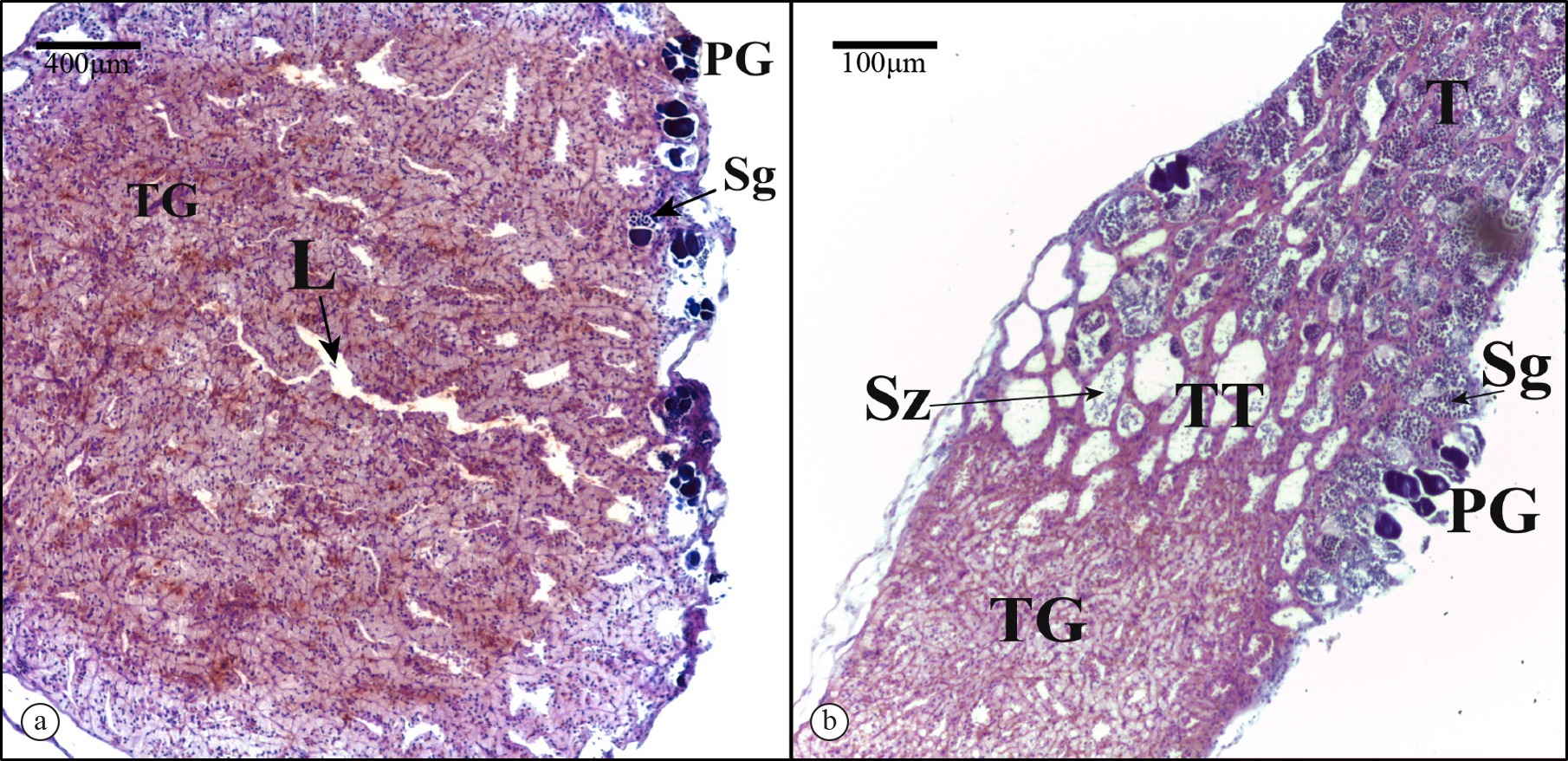Abstract
Many aspects of sex change in reef fishes have been studied, including behavior and social organization. However, gonad histology remains the most robust way to identify sexual patterns in fishes. Some uncommon tissues remain poorly described, such as the accessory gonadal structures found in species from the Gobiidae family, which are rare in other bony fishes. This is the first report of the testicular gland in Gramma brasiliensis and for the Grammatidae family. Between April 2011 and February 2012 eighty specimens were collected during four dive campaigns on the Taipus de Fora reef (13°56’20”S 38°55’32”W), Bahia, Northeast Brazil, and their sex was determined. Thirteen per cent of the active-females and 90% of the active-males had testicular gland tissue in their ovotestis. This discovery led to additional research into the characteristics of the gland tissue and its relationship with gonadal maturation. Three patterns of testicular gland development were found in Brazilian basslet ovotestis. Both ova and sperm-producing gonad contained testicular gland tissue, and the appearance of this tissue seems to be the first modification of ovotestis tissue marking the beginning of the protogynous sex-change process in G. brasiliensis.
Keywords:
accessory gonoduct structure; sex change; hermaphroditism; reef fish

 Thumbnail
Thumbnail
 Thumbnail
Thumbnail
 Thumbnail
Thumbnail


